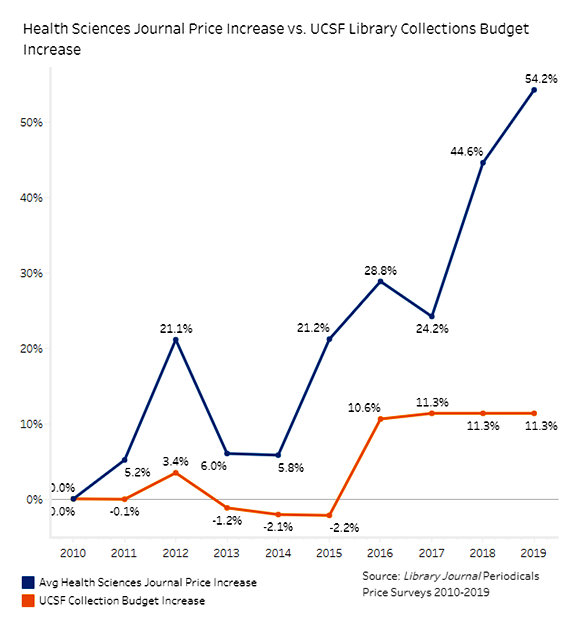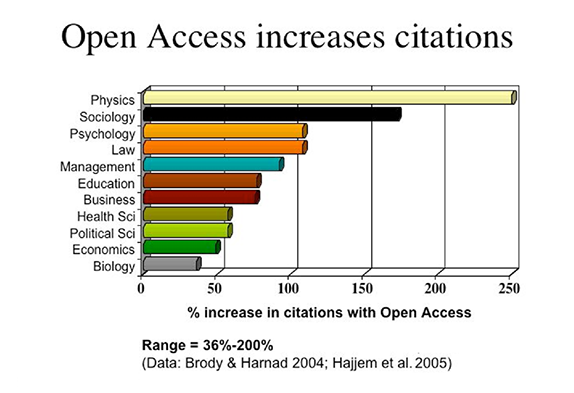 This year’s International Open Access Week (October 19-26, 2020), though scaled down from previous years here at CSUN, is nevertheless an important opportunity for us to focus on ongoing issues in academic publishing and the problems related to the mass-transfer of copyright to publishers.
This year’s International Open Access Week (October 19-26, 2020), though scaled down from previous years here at CSUN, is nevertheless an important opportunity for us to focus on ongoing issues in academic publishing and the problems related to the mass-transfer of copyright to publishers.
While we have much to be optimistic about regarding the future of open access, there are some headwinds that persist. The theme of this year’s International Open Access Week, “Open with Purpose: Taking action to build structural equity and inclusion” highlights how we might address some of these headwinds.
One of the largest criticisms of the academic publishing world is its high-cost barriers to access. First world nations with deep pockets are able to access this information despite the rapid increases in costs, partly out of the public funding that helps to spread these costs across whole societies. Despite our relative prosperity, however, even the most well-endowed universities and research organizations are having trouble surmounting these rising price barriers. (Not to mention the outrageousness of having to purchase access to the research you or your institution paid for in the first place.) As we see below, price inflation for journals has been outgaining the consumer price index significantly for years.
Yet what of the poorer parts of the world where a one-year subscription cost for Science at our institution (over $20,000) is roughly 20-40 times the per capita income? What if the information were vital to the health and well-being of the people in that country? What if information on COVID-19 were published but such countries that most needed it could not afford it?

This has been the major criticism leveled at online academic publishing for years. While it has been often an abstract or a small-case situation, now that the world is experiencing a pandemic for the first time in over 100 years – and where access to current information may be literally life or death – the abstract has become real.
So how do we add equality and inclusion into online academic publishing? What are the ways in which CSUN and the Oviatt Library are trying to meet these goals as well?
Let’s take a look.
The Elsevier-CSU Pilot Agreement
First, one of this year’s most important developments for CSUN and open access is the systemwide agreement with publisher Elsevier. This agreement provides all researchers within the CSU system, CSUN included, access to Elsevier journals while supporting publishing in open access. CSU affiliated authors can opt to publish in open access with the normal OA fees (also known as Article Processing Charges) waived. Some APCs range from $500 – $2500 per article, so this is a substantial amount. Additionally, CSU author can also self-archive manuscripts in CSUN ScholarWorks, in line with the Elsevier Sharing Policy.
What this means in clear terms is that any CSUN-affiliated researcher can publish in open access with participating Elsevier journals, either in so-called “Gold” open access (in which a fee covers the OA publishing) or in “Green” open access, which allows them to put a copy in a repository like CSUN ScholarWorks.
This will surely increase the number of articles published in OA stemming from the CSU system. With 23 campuses, 484,300 students with 26,858 faculty and 25,305 staff, the benefits to research through the sharing of open knowledge are enormous! For more information about this agreement please visit the Elsevier California State University agreement page.
Why publish in OA?
Along with the ethical imperatives of open access to information, there are also direct benefits to authors publishing in open access. OA bolsters the “Information Commons,” allowing more information to be shared toward the public good. Information itself is communicated more quickly. It cuts into the paywall system, helping to drive down costs of accessing information. Ultimately OA is a cheaper and more efficient publishing model, as there are lower costs associated per article to publish in open access.
But one of the main advantages is the Open Access Citation Advantage (OACA). The phenomenon has been studied extensively for the past twenty years (see A. Wagner, Open Access Citation Advantage: An Annotated Bibliography). Over this time, researchers have shown strong evidence of increased citations from publishing articles in open access in comparison to traditional pay-wall subscription publishing. In the image below, studies during the year 2000-2009 showed significant increases in citations, ranging from 69% – 400%, with certain disciplines more likely to log huge increases compared to others. In a meta-analysis conducted about OACA studies, 87% of the articles analyzed showed advantages to publishing in open access.
How does OA help scholars?

Open Access Citation Advantage: Selected Studies from 2001 – 2009 (69-480%)
- Lawrence (2001): OACA= 157%
- Brody (2004): OACA= 80-200%
- Harnad, Brody (2004): OACA= 150-480%
- Piwowar, Day, Fridsma (2007) OACA= 69%
- Gentil-Beccot, Mele, Brooks (2009) OACA= 400%
– Cf. Wagner (2010) Open access citation advantage: An annotated bibliography
The same holds for data that is released openly. It has been found that openly providing data for published research also increases citations. As seen in the image below, such increases are not minor. Reuse of data is an important factor in research and making it openly available improves the quality of the scholarly record.
Open Access to data also increases citations
Piwowar and Vision (2013): examined 10K+ papers on human genome
- Overall open data = +9% increase in citations between 2001-2009
- “Authors published most papers using their own datasets within two years of their first publication on the dataset, whereas data reuse papers published by third-party investigators continued to accumulate for at least six years”
- Of 10,555 papers, 9,724 instances of data re-use by 3rd parties

Participating in Open Access
You can participate in open access in several ways.
The first way (a.k.a. Gold Open Access) is through publishing in open access journals, as with the Elsevier agreement, or by seeking out journals through the Directory of Open Access Journals (DOAJ). Each journal in this directory is vetted and approved for addition to the list. Some journals require the payment of APCs, as mentioned above.
You can also participate by submitting your work to ScholarWorks (a.k.a. Green Open Access). This is also known as self-archiving. You provide a copy of your work for uploading. We then will add your publications to the repository in the form accepted by the publisher (usually a first draft or a peer-reviewed draft prior to the final version).
We host a full range of materials and file types in our open access repository ScholarWorks. We include items in formats such as PDF, MS Word, mp3, mp4, WAV, and so on. Our collections include data sets, journal articles, books, dissertations and theses, even whole journal issues. Finally, you can create your own open access journal, or move one to an open access model. This is called “Journal Flipping” and has seen some modest successes in helping to shift a publication from a subscription model to open access.
2020 Open Access Week events around the web
There are quite a number of events occurring during Open access week. Some are recorded while others are providing live streaming events covering a full range of open access topics. Check these out!
- 2020 International Open Access Week upcoming events (October 18-26, 2020)
- Princeton University: Open access in the context of COVID-19 (October 20, from 1-2 PM PDT.)
- Johns Hopkins University: Authors Rights and Negotiating Author Agreements (October 21, 2020 9:30 AM PDT)
- ACRL Presents: Celebrating Open Access Week: Building Structural Equity and Inclusion in Scholarly Communications (October 21, 2020, 11:00 AM PDT)
- Johns Hopkins University: Citizen DJ: A Future of Sampling (October 23, 2020 10:30 AM PD)
Final thoughts
Rising inequality is a driving force in the information age, driving a wedge between research and knowledge created for the public good and the people most in need of it. Open access has been seen as one antidote to this global problem. CSUN and the Oviatt Library have been actively engaged in open access for the past decade, starting first with our 2012 Faculty Senate Resolution on Open Access; our support of California Assembly bills (609 in 2014, and 2192 in 2018) for open access in state-funded research; our early adoption of the Berlin Declaration on Open Access; and continued support of Federal mandates for open access to research.
Our ultimate goal is to reduce the walls that contain information that has been created by our own researchers for the benefit of not only our stakeholders, but anyone else who needs it.
For more information, contact the library’s Open Access and Digital Publishing Team!
We are:
- Andrew Weiss | Digital Services Librarian | apweiss@csun.edu
- Elizabeth Altman | Library Web Services Coordinator | ealtman@csun.edu
- David Morck | Web Programmer | dmorck@csun.edu
- Richard Thai | ScholarWorks Assistant | rthai@csun.edu
- Chris Bulock | Collection Development Coordinator, Chair CAMS department | cbulock@csun.edu



